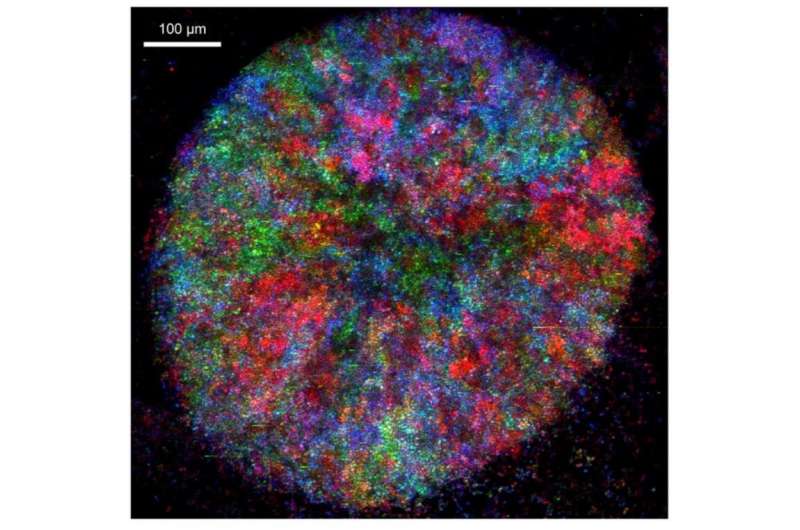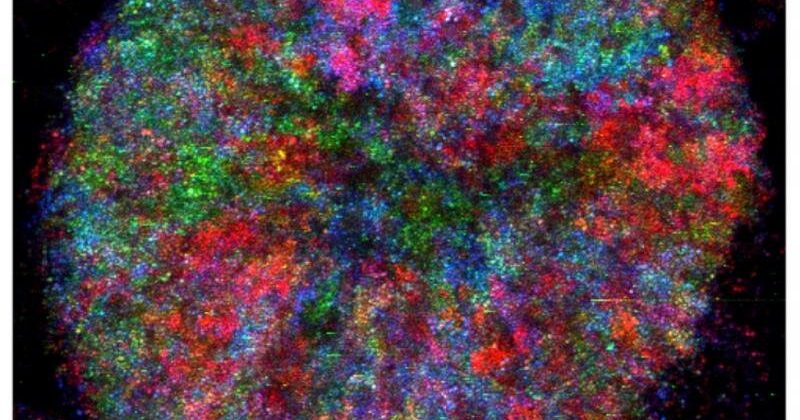
Scientists at the Francis Crick Institute have uncovered how, when young and old cells co-operate and exchange resources, this increases the lifespan of all the cells.
Cells create energy through a complex network of chemical processes which together make up the cell’s metabolism. While the metabolism of one cell is crucial to its own survival, it can also affect its neighboring cells.
In their research, published in Cell today, the team studied how chemical reactions occurring inside yeast cells can affect the lifespan of the wider cell community. They focussed on the processes used by cells to exchange metabolites, substances that are produced when cells create energy.
Using state-of-the art technology that could follow the path of the exchanged metabolites, they found that young cells, that were growing and dividing frequently, released amino acid into the environment and, when this was then taken up by older cells, the whole community of cells lived longer.
One of the amino acids, methionine, was of particular importance. Methionine is a sulfur containing amino acid, present in all organisms including humans, and is needed to kick start the process of building proteins and is also important in many cellular processes.
Researchers found that the uptake of methionine changed the metabolism of the older cells, affecting key anti-aging pathways such as those impacting anti-oxidants. It also led to the release of metabolites with protective properties into the environment, which could then be taken up by other cells. This included glycerol, which is needed, among other things, to build cell membranes.
“Metabolism is a key factor that influences aging and metabolism does not occur only inside cells but also between cells,” explains Markus Ralser, senior author and group leader of the Molecular Biology of Metabolism Laboratory at the Crick and head of the Institute of Biochemistry at Charité, a leading University hospital in Berlin.
“When the cells took in methionine instead of producing it internally, this caused fundamental changes within the cell. And these changes not only benefited the single cell, but the whole community. We’ve previously shown how co-operative cell behavior has other benefits, such as increased tolerance of drugs, but this is the first time it has been linked to longer lifespans.”
Clara Correia-Melo, first author and researcher at the Crick, soon starting her own laboratory at the Leibniz Institute for Aging Research—Fritz Lipman Institute (FLI) in Jena, Germany, said “Studies of cell metabolism have historically focused on what happens inside the cell, where hundreds of chemical reactions are taking place, producing many metabolites and impacting the environment in the cell. But this is only part of the puzzle and it is also important to understand how what happens in one cell can impact its neighbors.”
“Our results, showing that the exchange of metabolites between cells leads to longer lifespan, might prompt other scientists to explore the role of metabolism in health and disease by expanding their analysis to include the metabolic environment in cell communities.”
The researchers will continue this work, studying in further detail the molecular pathways at play. They also hope to expand the work to other, more complex organisms, including mammals.
More information:
Clara Correia-Melo et al, Cell-cell metabolite exchange creates a pro-survival metabolic environment that extends lifespan, Cell (2023). DOI: 10.1016/j.cell.2022.12.007
Journal information:
Cell
Source: Read Full Article
